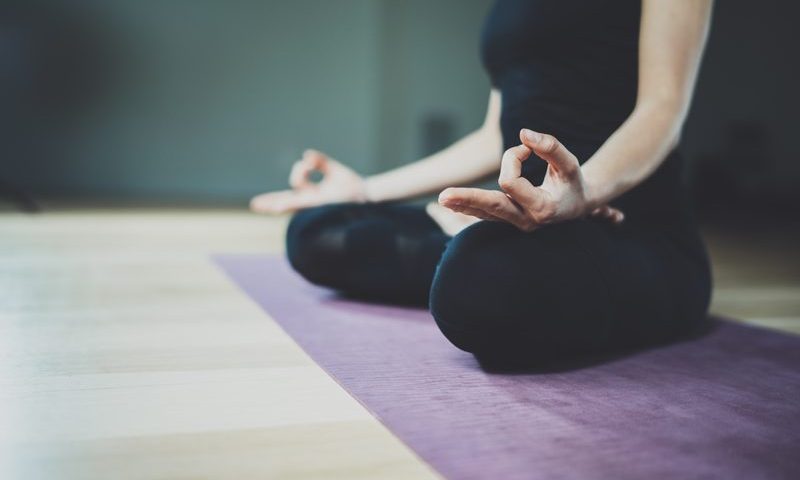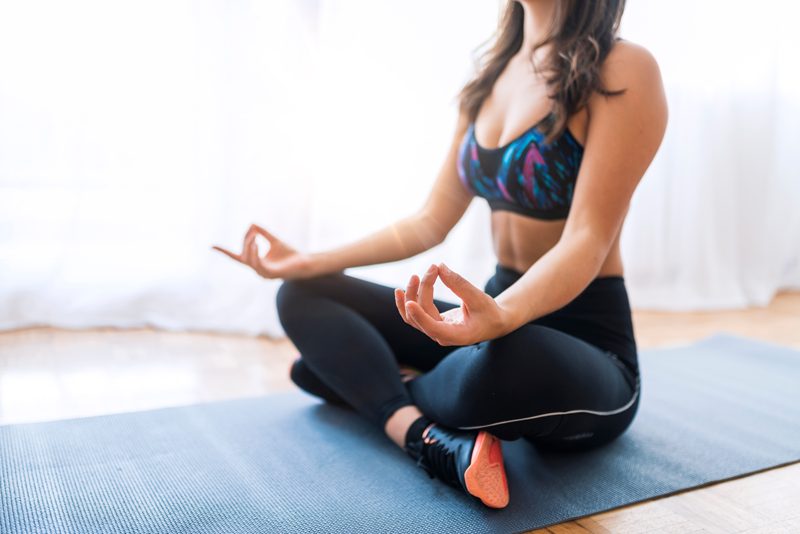
Yoga Poses That Help Everyone
19th April 2019
How to Mix Fitness and Yoga
26th April 2019Simple Tips to Start Meditation

Meditation can seem daunting, particularly if you’re new to yoga. Many people assume that the practice takes hours and requires absolute silence to be effective; however, this isn’t necessarily true. Meditation can be done in as little as 5 minutes and can be worked into a busy schedule. While a quiet space makes it easier to focus, this isn’t a necessity. Finding absolute silence is impossible for most people, particularly those with young families or noisy pets! Meditation is a personal practice and can be carried out however you see fit.
It’s extremely difficult to put on your yoga top and think about nothing. Thankfully, there are other ways to meditate effectively. As different meditation practices require different mental skills, there is something to suit everybody. In this article, we explore a few tricks and tips to start meditation.
Choose a Technique
The best meditation for you will depend on your skills and preferences. Different meditation practices require different skills, so think about the areas you excel in before choosing a practice. If you’re unsure of your skills, don’t panic! There’s no harm in trying a few different techniques until you find one that works well. Below, we discuss a few of the most common meditation practices.
Transcendental Meditation
Transcendental Meditation (TM) is the technique that many people are familiar with. Practising TM for just 15 minutes can control anxiety and calm the nerves. To practice TM, all you need to do is repeat a positive sound or mantra. If you choose to repeat a mantra, concentrate on an area you’d like to improve. For instance, if you’re meditating to calm the mind, repeating ‘I am calm and content’ can have a positive effect. As there is so much information on this technique, TM can be one of the easiest practices for beginners.
Vipassana Meditation
Originating in India, Vipassana is one of the oldest meditation techniques. This practice is a combination of mindful breathing and contemplation techniques, designed to encourage self-exploration and harmony between the body and mind. To practice Vipassana Meditation, find a comfortable seated position. Once you’re settled, concentrate on your breathing. Feel the air fill different parts of your respiratory system, such as your nostrils, lungs, and diaphragm. This will help to keep your attention sharp and your mind focussed.
Chakra Meditation
As the name implies, Chakra Meditation focusses on the seven chakras. Chakras are best explained as the body’s energy points, or centres where you receive, transmit, and process life energies. Working with the chakras encourages your mind, body, and spirit to work as one. To practice Chakra Meditation, begin by sitting comfortably with your back straight. Next, release the stress and tension from each part of your body, starting with your feet and working upwards. Throughout the practice, stay focussed on your breathing and visualise your beating heart; as you do so, imagine every fibre of your body working together in perfect harmony.

Set Time Aside
To get the most from your practice, be sure to set time aside. If you’re feeling rushed, it will be harder for the mind to focus. To avoid this, set a period of time aside that you can devote to your practice. Many people enjoy meditating in the evening after they’ve got work and household chores out of the way. That way, you know that everything else has been done and you can concentrate solely on yourself. Whenever you choose to practice, try to stick to the same time each day. If you don’t set time aside, you’re more likely to forget or run out of time.
Find a Comfortable Space
Another great tip to start meditation is to find a comfortable space. If you’re struggling to focus, a relaxing environment can work wonders. Try to find a quiet space that you won’t be disturbed. While practising at home is convenient, some people find that a local park or library works better. That way, you won’t be disturbed by your children, pets, or spouse, and you can dedicate that whole block of time to yourself. If you’ve got a comfortable space at home, great! Talk to your family beforehand and explain the situation; that way, you should be able to get 15 minutes downtime. If it helps, set the mood with some cosy blankets and scented candles. Fill the room with anything that makes you feel at peace.
Wear Comfortable Clothing
For the mind to focus, it’s important to be comfortable. If you’ve got an uncomfortable button or zipper, that’s all you’re going to think about. To avoid this, wear yoga pants or sweatpants with a flexible waistband. While fitted clothing is great for yoga, a baggy t-shirt may be better for meditation. As you’re staying in one position, there’s no reason for the baggy fabric to get in the way.
In Summary
If you’re new to meditation, taking the first step can be nerve-wracking. Hopefully, the above tips to start meditation should make things a bit easier. For best results, make sure to set time aside for your practice. When you’re new to meditation, there’s no point practising when you’re rushed for time. This will only stress you out and prevent your mind from focussing. While you’re getting used to the practice, make sure to leave plenty of time to get stuck into it. If a certain technique isn’t working for you, try moving onto another one instead. Providing that you’re using a quiet space and wearing a comfy yoga hoodie, it won’t be long before you get the hang of it! If all else fails, take some time out and return to the practice later with a fresh mind.

